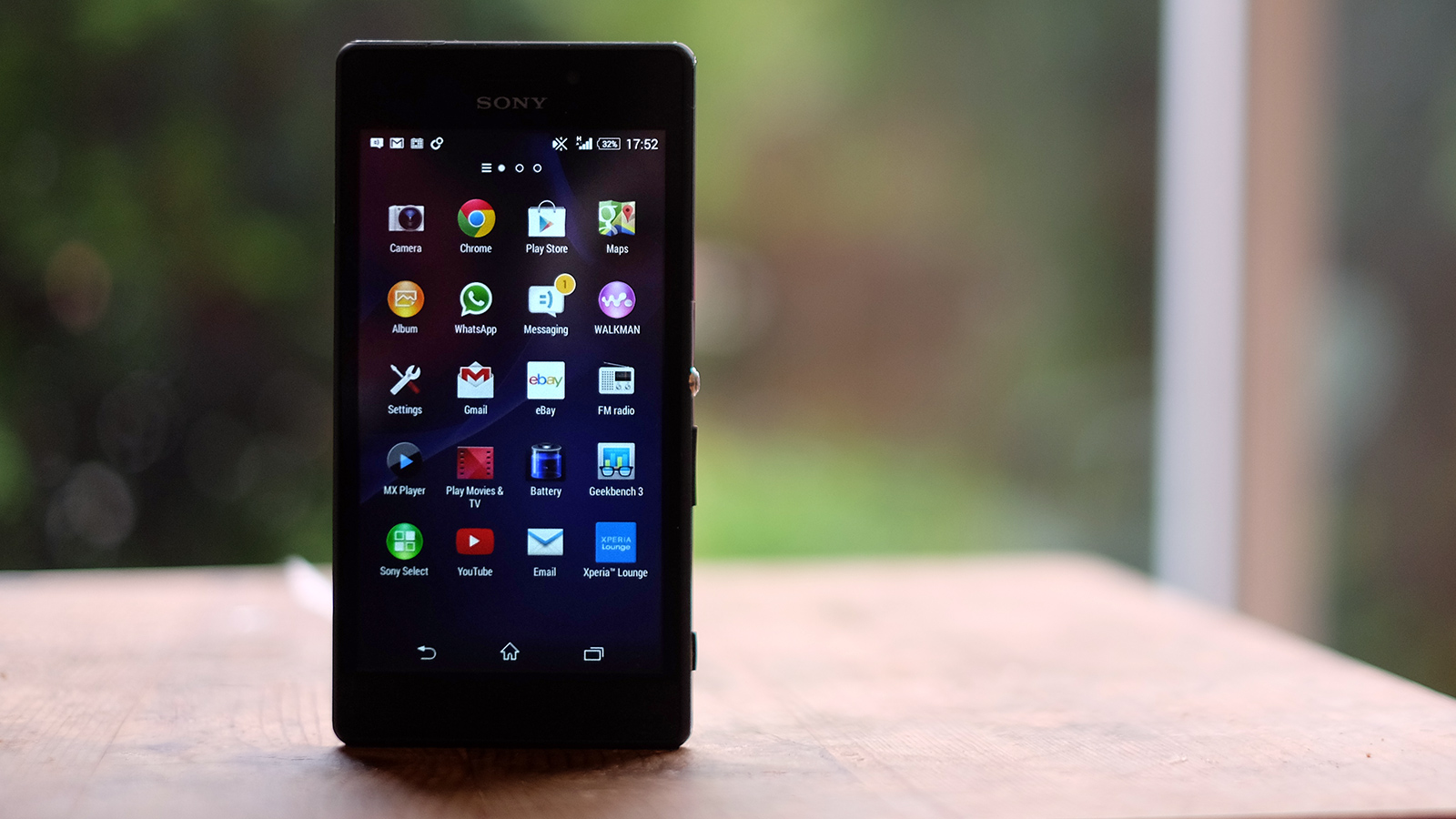TechRadar Verdict
Like the Sony Xperia M2, the M2 Aqua is a sold mid-range Android phone. But its added water resistance is a bit awkward and it doesn't solve any of its sibling's issues. The screen and camera also disappoint.
Pros
- +
Top level water resistance
- +
Good battery life
- +
Attractive design
Cons
- -
Screen isn't competitive
- -
Clumsy waterproofing flaps
- -
Camera struggles with lighting conditions
Why you can trust TechRadar
In recent times, Sony has become one of the leading makers of water resistant phones. Just a few years ago weatherproof mobiles like this were big, chunky, and looked like they belonged on a construction site. Phones like the Sony Xperia M2 Aqua are a completely different proposition.
There's nothing in the basic look of this phone that shows it's a tough, rugged phone. That's a good thing, if you're wondering.
The Sony Xperia M2 Aqua also sees Sony's waterproofing make its way a bit further down the price scale. It's no longer reserved for phones that cost almost as much as your first car.
This is the water resistant version of the Sony Xperia M2, a fairly low-cost 4G phone that we thought was pretty good at review.
The Aqua doesn't solve any of that phone's core issues, and as the waterproofing adds a bit to the cost, it is a slight missed opportunity. However, it's still a solid, sturdy phone and one of the cheaper water resistant mobiles.
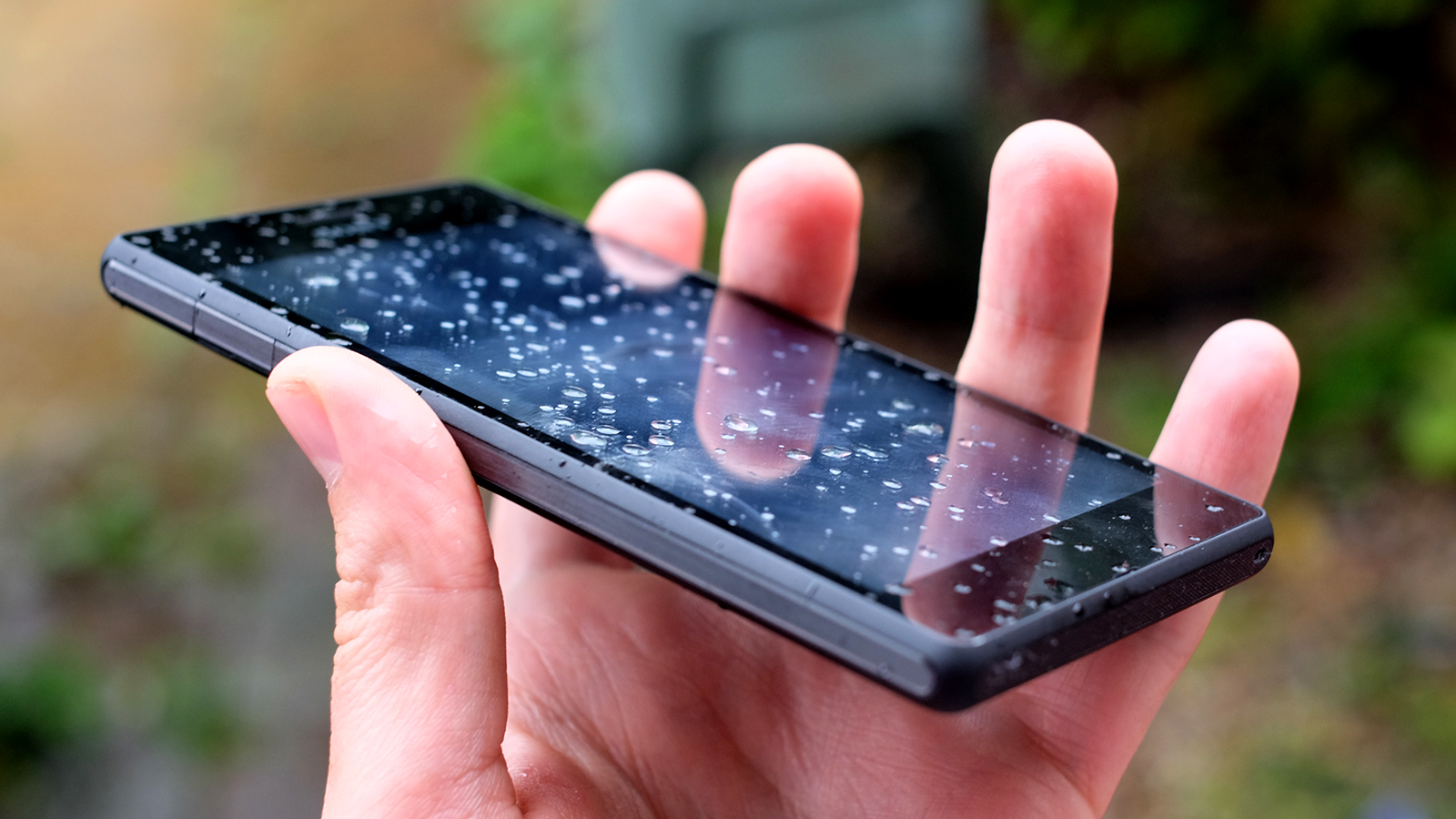
As well as offering waterproofing and 4G for a good deal less cash than something like the Xperia Z2, the Sony Xperia M2 Aqua has the sort of stature that seems pretty high-end.
You get a 4.8-inch screen, and a design that has a lot in common with Sony's more expensive phones.
The real Sony mobile phone staple is something it calls Omnibalance design. It's all about trying to infuse a bit of symmetry into a handset, but what most people notice is the power button.
Round, silver and placed slap-bang in the middle of the phone's side, it's both highly recognisable and easy to access with your thumb.
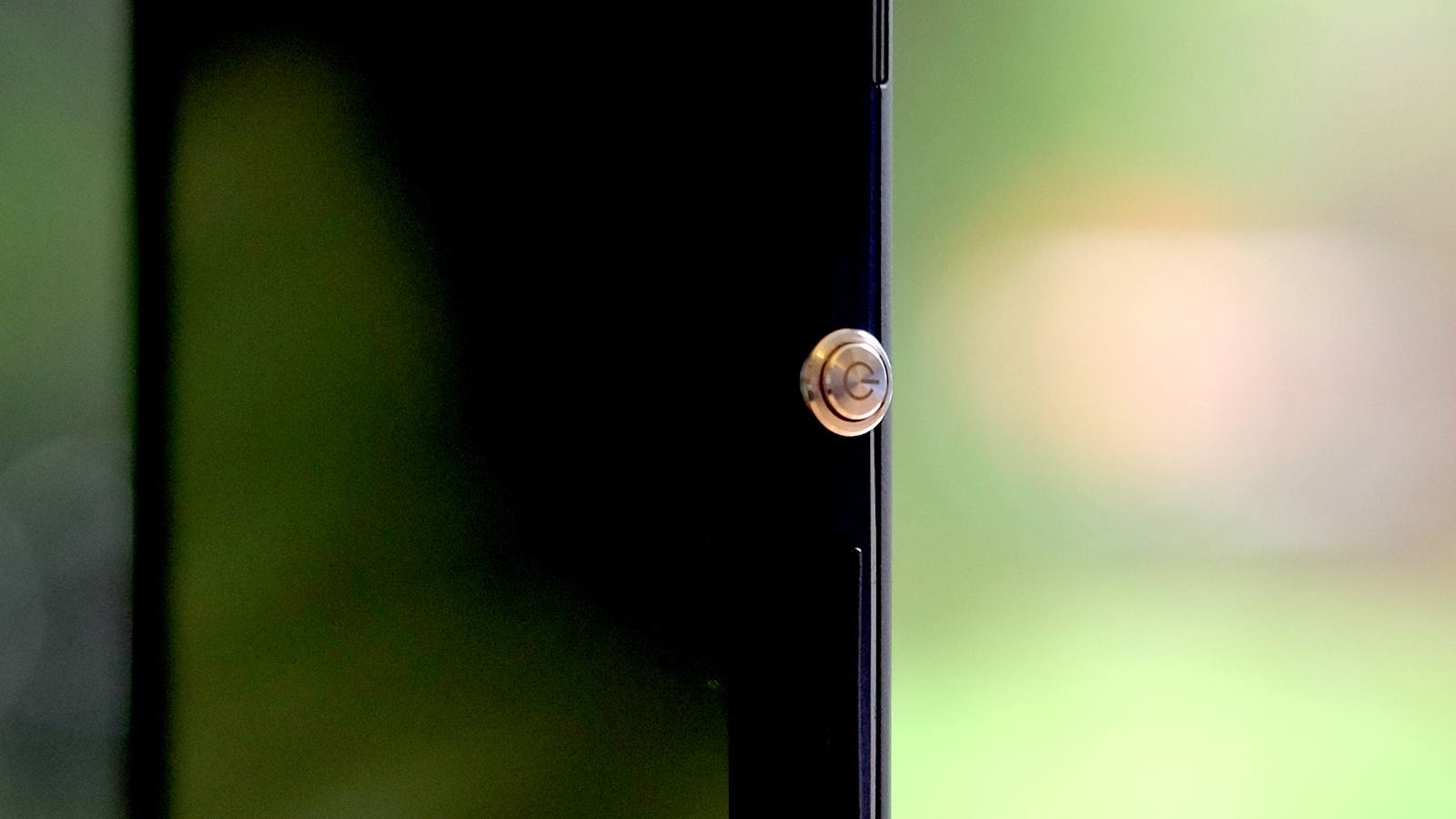
The shape of the Sony Xperia M2 Aqua is very similar to the top-end Xperia Z2 as well. It's a somewhat-blocky black rectangle with totally flat back and front panels.
What you miss from the Xperia Z2 is a lot of the metal and glass – both the back and front panels in that phone are made of the glassy stuff. Here, the front is Gorilla Glass 3, but the back is textured plastic. And the core structure is plastic rather than aluminium.
The Sony Xperia M2 Aqua is a bit different to its closest relative the 'plain' Xperia M2 as well. Where the standard M2 has a shiny plastic rear that's basically an impersonation of glass, the Aqua version has a textured translucent top layer that makes the rear feel a bit like textured glass – the kind of stuff used in the mouse trackpads of high-end laptops like the MacBook Air.
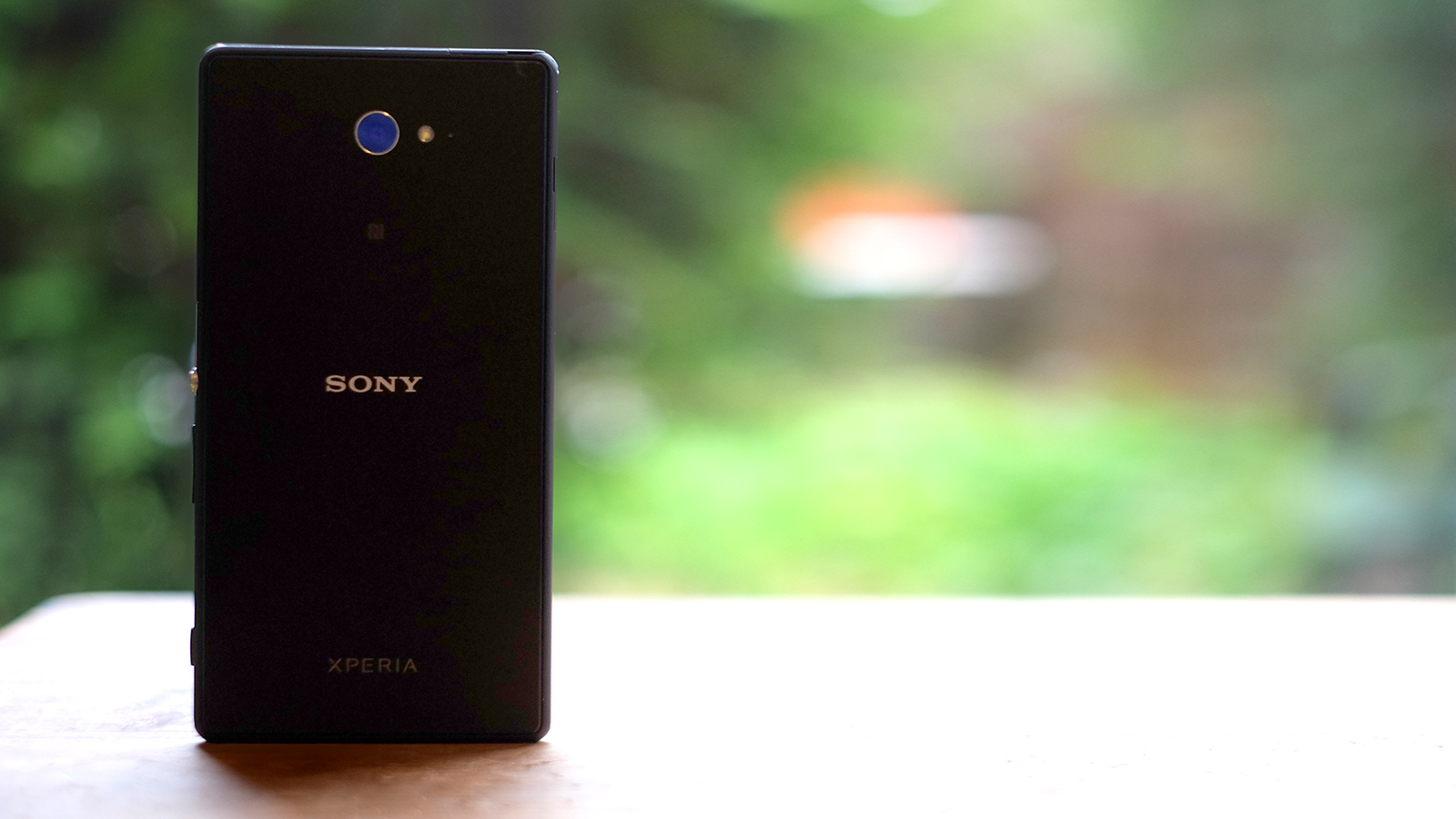
It feels good, and I consider it a better choice than the glossy style of the Xperia M2. Matt finishes like this generally highlight scratches less than glossy ones, which should keep the Aqua looking decent well into the two year contract that many of you may buy this phone with.
Of course, tweaks to finishes are not really what the Sony Xperia M2 Aqua is all about. Water resistance is.
The actual level of water resistance on offer here is fantastic. It's rated to IP68 standard, which means it's completely impervious to dust and can be held underwater indefinitely without ill effects.
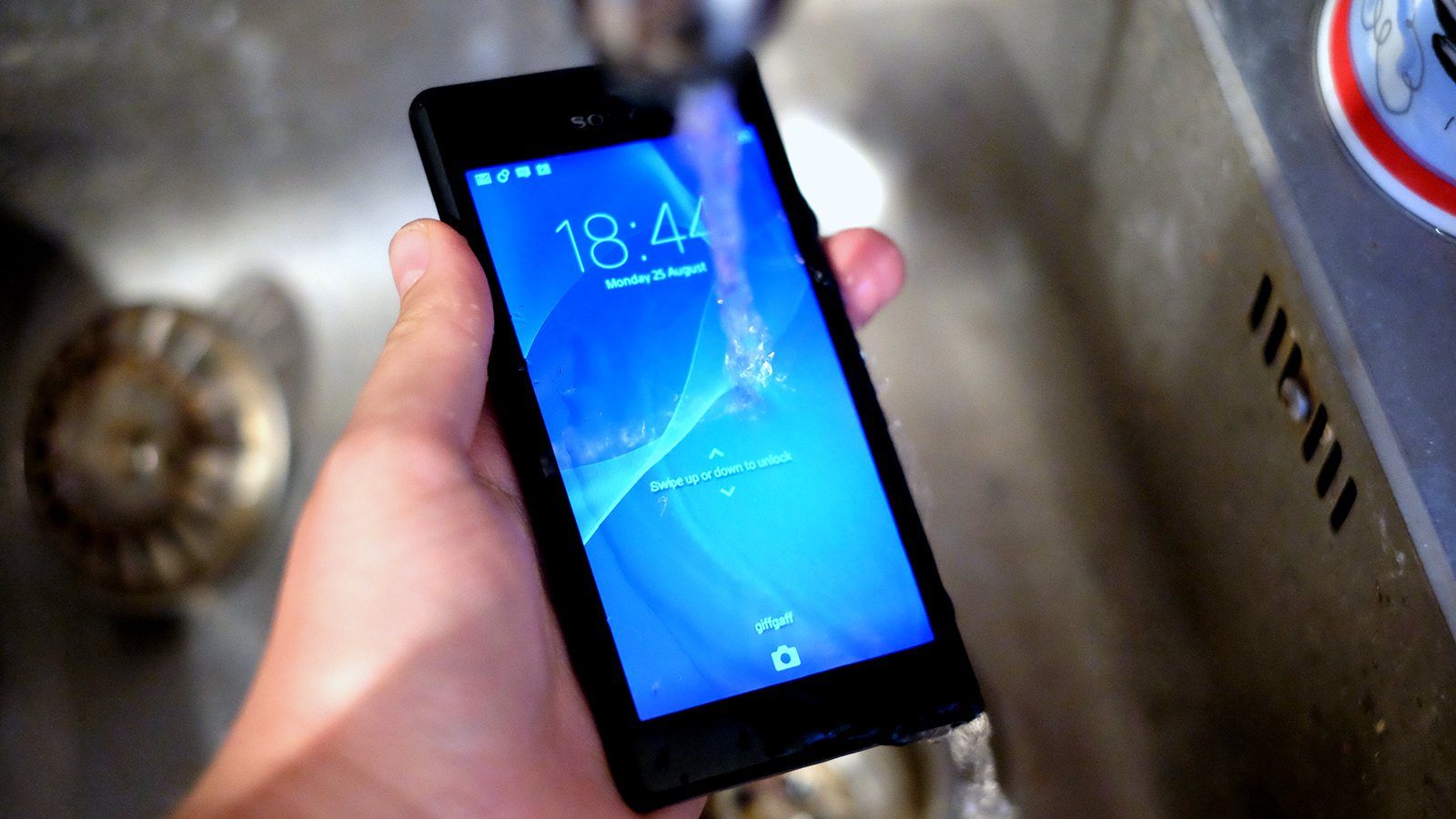
The actual execution of the Sony Xperia M2 Aqua weatherproofing leaves something to be desired, though. I consider the holy grail of water resistance to be a phone that can be dropped in water without requiring annoying flaps.
The Sony Xperia Z2 has a headphone jack that doesn't need a separate flap, and the Samsung Galaxy S5 Mini even has a treated, uncovered microUSB port. We're really getting there.
However, the Xperia M2 Aqua's weather resistance is a pretty old school. There's a flap on the left edge to cover the microUSB port, one up top to cover the headphone jack and yet another one on the right that hides the microSIM and microSD slots. It's truly flap-tastic. With just one of the flaps out of place that IP68 water resistance is flushed down the toilet.
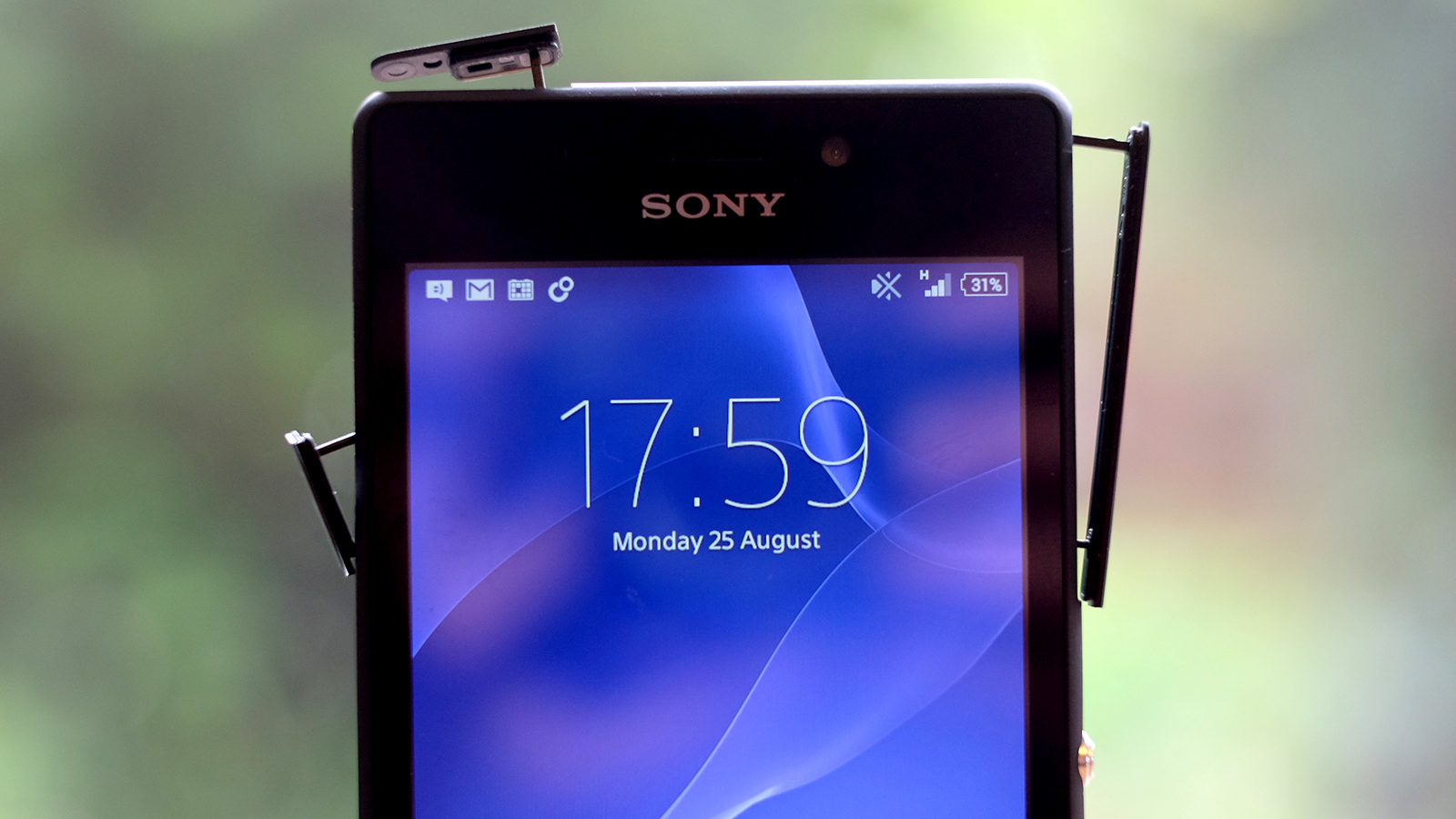
The upside of this style of waterproofing is that with all the flaps in place the Sony Xperia M2 Aqua's sides look very pure and simple. No unsightly holes or sockets. However, after you've gotten used to that look (after all of about five minutes), the practical issues overshadow the aesthetic benefits.
Every time you want to plug in headphones or charge the phone, you need to sort out the flap. It gets annoying. And while it's a personal thing I think having a flap draped over your headphone jack looks awful.
You also need to limit your expectations of what water resistance really gets you, especially as the Sony Xperia M2 Aqua is marketed as the 'most waterproof' phone there is. It still uses a capacitive touchscreen, which goes haywire as soon as it gets wet – you can't really operate the phone underwater.
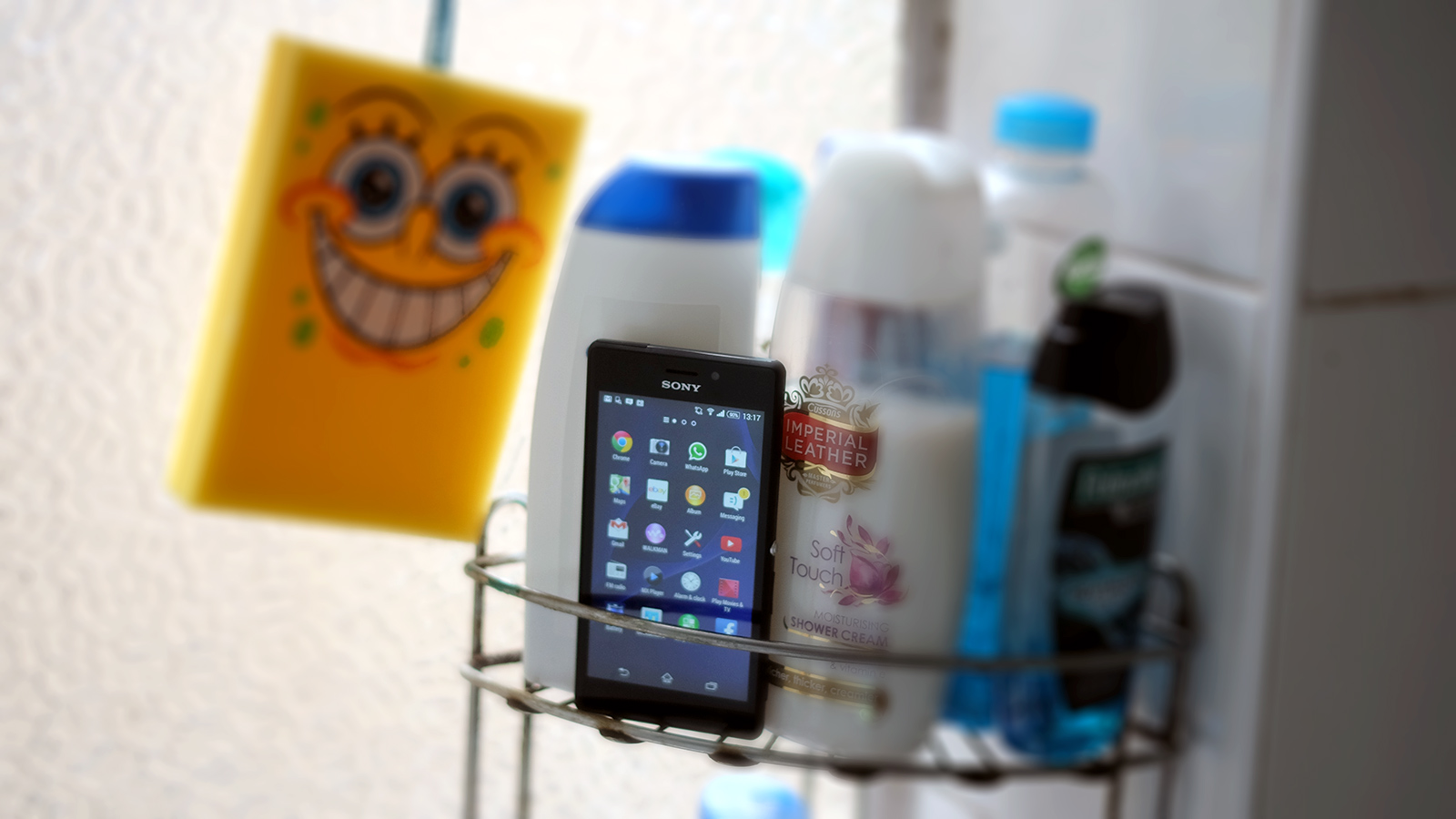
In fairness to Sony, though, there is a physical camera shutter button on the phone's side. You can at least take photos underwater. Not in the sea, though.
You're only meant to use the phone in freshwater, presumably because sea water would lead to faster deterioration of the rubber seals that keep the Xperia M2 Aqua's insides dry.
And you may be wondering – exactly why is this phone more waterproof than any other water resistant phone? IP67 is a more common resistance rating, this one is IP68-certified.
Where IP67 can be submerged for around 30 minutes, IP68 devices can be submerged for good, more-or-less. It's not a big difference unless you're thinking of shacking up with a mermaid.
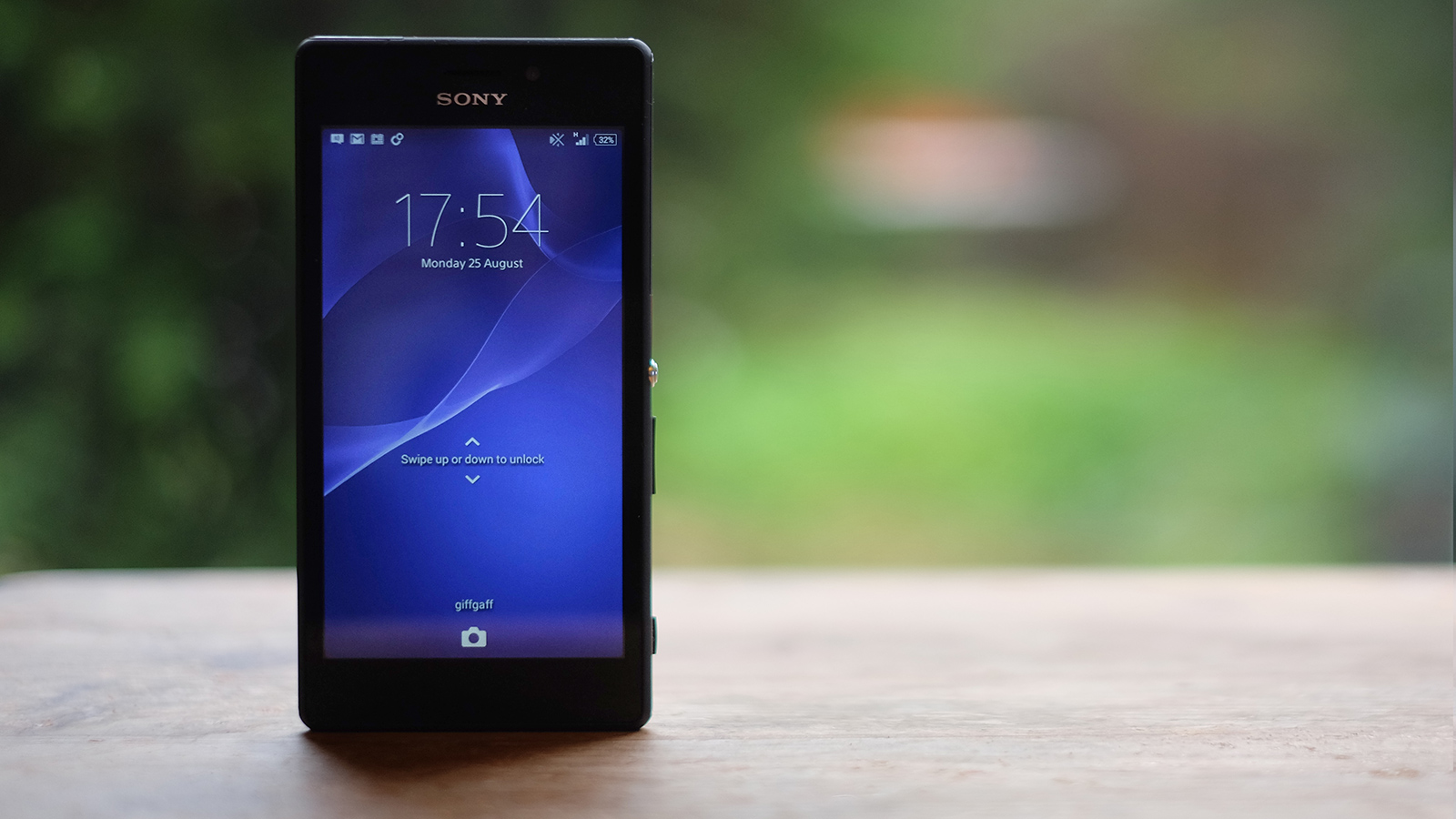
As critical as I have been of the Sony Xperia M2 Aqua's water resistance, it is a very handy feature. And handling-wise, the phone is perfectly fine.
The 4.8-inch screen is not oversized, and while the blocky shape doesn't make it feels tremendously thin, it actually is pretty skinny at 8.6mm thick.
Andrew is a freelance journalist and has been writing and editing for some of the UK's top tech and lifestyle publications including TrustedReviews, Stuff, T3, TechRadar, Lifehacker and others.
